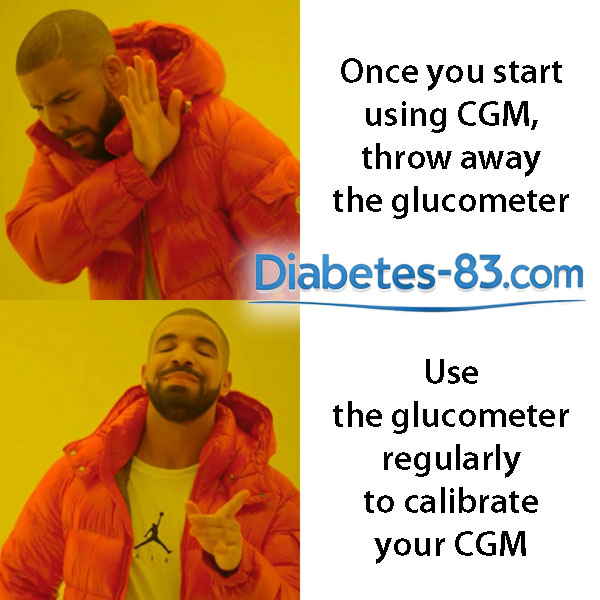Frequent blood sugar monitoring is essential for achieving optimal control of type 1 and type 2 diabetes in adults and children. Adopting a low-carb diet is always beneficial for people with diabetes. This diet is most effective when paired with consistent, detailed tracking of blood sugar patterns. Setting up reliable glucose monitoring is no simple task. It can be expensive, mentally demanding, and full of nuances. Below, we explore its challenges and how to manage them effectively.
For people with diabetes, it is essential to understand a few key things:
- Your typical blood sugar levels.
- How those levels respond to any changes you make.
- How your blood sugar tends to behave throughout the day, especially in the morning before eating and after meals.
- How different foods affect your blood sugar.
- How your blood glucose reacts to the factors that affect insulin sensitivity.
A consistent, well-structured daily blood sugar monitoring routine will help you find answers to all of the questions above.
Blood Sugar Monitoring Basics: What Every Diabetic Should Know
Key Points to Remember:
- A continuous glucose monitoring system (CGM) is not a must-have, but it is of great help.
- Do not discard your traditional glucometer once you start using a CGM. Keep your glucometer close at hand.
- Carefully review the rules for using the glucometer. They are provided later on this page.
- Test your glucometer for accuracy as described below. If it proves unreliable, replace it with a better model.
- Use your glucometer regularly to calibrate your CGM.
- Always keep your glucometer close at hand for emergency checks, especially if you suspect hypoglycemia or believe your CGM is giving false readings.
Below, you can find more in-depth information on each of the points.
Why You Should Not Cut Corners on Continuous Glucose Monitoring and Supplies
For both adults and children with diabetes, utilizing a continuous glucose monitoring system is of utmost importance. Make it your top priority to secure the funds needed for buying this device and its consumables.
Attempting to cut corners and save money on a continuous glucose monitoring system is ill-advised. Neglecting to invest in this essential device can lead to significant financial burdens in the future when faced with the costly treatment of diabetes-related complications.

Every time you measure blood sugar with a glucometer, you need to spend money, albeit small, and also strain your willpower. This entire situation is very unpleasant. Employing a continuous glucose monitoring system makes the task a lot easier. It increases the likelihood of adhering strictly to the precepts of low-carb religion. If you slip up, your blood sugar goes up. Seeing it right away can motivate you to do better.
By maintaining stable blood sugar levels similar to those of individuals without diabetes, you or your diabetic child can avoid experiencing acute and chronic complications associated with the condition. Furthermore, CGM provides the added convenience of alerts when blood sugar levels rise or fall too drastically. This feature proves particularly valuable during nighttime.
Maybe you have a family member or friend who has diabetes, and you’re contemplating what to gift them for an upcoming holiday. The continuous glucose monitoring system and its supplies would make an excellent choice.
The Downsides of Continuous Glucose Monitoring Systems
One big downside of continuous glucose monitors is how expensive the sensors are. Additionally, these devices exhibit a delay of approximately 10 to 20 minutes in reflecting the actual blood glucose levels. This delay is inherent because continuous glucose monitoring systems measure glucose not directly in the bloodstream. They extract information from the subcutaneous fat tissue. The delay appears unavoidable, and it is necessary to account for it.
Still, using a continuous glucose monitor comes with massive benefits. The high cost of consumables may become less pronounced over time. There have been murmurs about the clandestine production of inexpensive pirated sensors for popular continuous glucose monitors, particularly in China.
Why You Should Use a Glucometer Alongside Your Continuous Glucose Monitor
While utilizing a continuous glucose monitoring system is valuable, it does not eliminate the necessity of having a reliable and accurate glucometer for occasional blood sugar measurements. A glucometer is essential when you suspect hypoglycemia, as the continuous glucose monitoring system signals problems with a delay of at least 10 minutes.

Your continuous glucose monitoring system will probably require periodic calibration with a glucometer. This procedure involves measuring blood sugar using a glucometer and entering the obtained result into the CGM system’s control program. After that, the device will provide more accurate readings. Therefore, utilizing an unbiased glucometer in addition to the continuous glucose monitoring system is essential for optimal blood glucose monitoring.
Blood Sugar Monitoring Frequency
Below, you’ll find guidance on the recommended blood sugar measurement frequency. Adults and children diagnosed with diabetes should monitor their blood glucose levels often, preferably at least 4-5 times throughout the day. It is advisable to adhere to the following schedule:
- Upon awakening in the morning, check the blood sugar level as soon as you wake up.
- Pre-breakfast measurement: If there is a time gap of at least half an hour between waking up and having breakfast, it is a good idea to measure blood glucose levels again before eating.
- Before lunch: Check your blood sugar levels before the midday meal.
- Before dinner: Before the evening meal, it is advisable to check blood sugar levels. It is worth noting that having dinner no later than 6-7 pm is preferable.
- After each meal, monitor your blood sugar to see how high it peaked and how quickly it returned to normal.
- Before going to bed, check your blood glucose levels and maybe inject the dose of long-acting insulin.
Utilizing a continuous glucose monitoring system makes it much easier to keep track of your blood sugar levels regularly.
How to Successfully Transition to a Low-Carb Diabetes Management System
It is crucial to closely monitor your blood sugar levels during the initial days and weeks after transitioning to a low-carb diabetes management approach. During this period, you have not yet established the optimal doses of insulin and glucose-lowering medications. Consequently, blood sugar levels can fluctuate frequently, dipping too low or rising too high. It may be necessary to promptly address hypoglycemia or administer an emergency dose of rapid-acting insulin.
After establishing a routine in your new low-carb lifestyle and achieving healthy blood glucose levels, you may want to stick to the same daily schedule of blood sugar measurements. Dr. Bernstein has had severe type 1 diabetes since 1946. He adhered to this practice diligently. The unwavering commitment to regular blood sugar measurements played a key role in his living 45-50 years longer than expected.
When to Check Your Blood Sugar Immediately: Urgent Situations
If you suspect a significant increase or decrease in your blood sugar levels, promptly perform an extraordinary measurement. If you anticipate a stressful event soon, check your blood glucose levels outside your regular schedule.
Additionally, during intense physical activity, individuals with type 1 diabetes should monitor their blood sugar levels every 15 to 30 minutes and ensure they have glucose liquid or tablets readily available.
While continuous glucose monitoring systems are incredibly helpful for day-to-day tracking, they are not always the best tool for every situation. In moments when precision and speed matter most, a good old-fashioned fingerstick test can be the difference between safety and serious trouble. A proactive approach enables you to respond quickly to undesirable fluctuations in your blood glucose levels, ensuring your well-being during challenging situations.
Glucometer Use: Tips, Tricks, and Common Pitfalls
Before using a glucometer to measure blood sugar levels, you obtain a blood sample by pricking the finger with a disposable lancet. In addition to the pads of the fingers, you can try to prick the fingers from the back. Just be cautious to avoid the joints and nails. This lesser-known trick helps distribute the “load” more evenly across the surface of the fingers, aiding in the healing process and reducing the likelihood of scarring.
It is essential to eliminate any invisible traces of dirt or food from the skin before measuring blood sugar with a glucometer, as they can significantly affect the accuracy of the results. However, it is not necessary to use alcohol or other disinfectants to clean the finger before pricking. Instead, a simple and effective method involves washing the hands with warm water and soap, followed by thorough drying. If running water and soap are not readily available, utilizing a damp cleaning cloth to wipe the finger will suffice.
Exercise caution when sharing a glucometer with others. While it is OK to lend the device, it is crucial to always use a new lancet for each person. Do not allow others to utilize the same lancet that you use to prick your fingers. Even though the lancet may appear clean, traces of blood always remain on it. Through these traces, there is a potential risk of transmitting various dangerous diseases. To prioritize safety, ensure each individual using the glucometer has their own fresh and sterile lancet.
How to Verify Your Glucometer Accuracy
There are two methods to verify the accuracy of a glucometer. The first method involves checking blood sugar levels three consecutive times with the glucometer. The results of these measurements should show a difference of no more than 15-20% from each other, especially when the blood glucose levels are close to normal.
The second method involves performing a fasting blood glucose test at a laboratory in the morning. Simultaneously, measure your blood sugar using the glucometer and compare the results. Similar to the previous method, the discrepancy between the laboratory test and the glucometer reading should be within 15-20%. If the difference falls between 5-15%, it indicates that the glucometer has good quality.
A significant difference between blood sugar readings from a home glucometer and those from professional lab equipment is generally considered acceptable. If it does not exceed 20%, then the glucometer is considered good enough and there is no need to replace it with another one.
Managing Bleeding During Blood Sugar Checks
Sometimes, when measuring blood sugar with a glucometer or administering insulin injections, you will accidentally puncture a subcutaneous blood vessel, resulting in some bleeding. Keep dry and clean paper towels readily available to absorb any blood.
Despite all efforts, bloodstains may appear on clothing. Hydrogen peroxide is the best option for immediate bloodstain removal. If hydrogen peroxide is not readily available, another alternative to consider is using milk to treat the bloodstains.